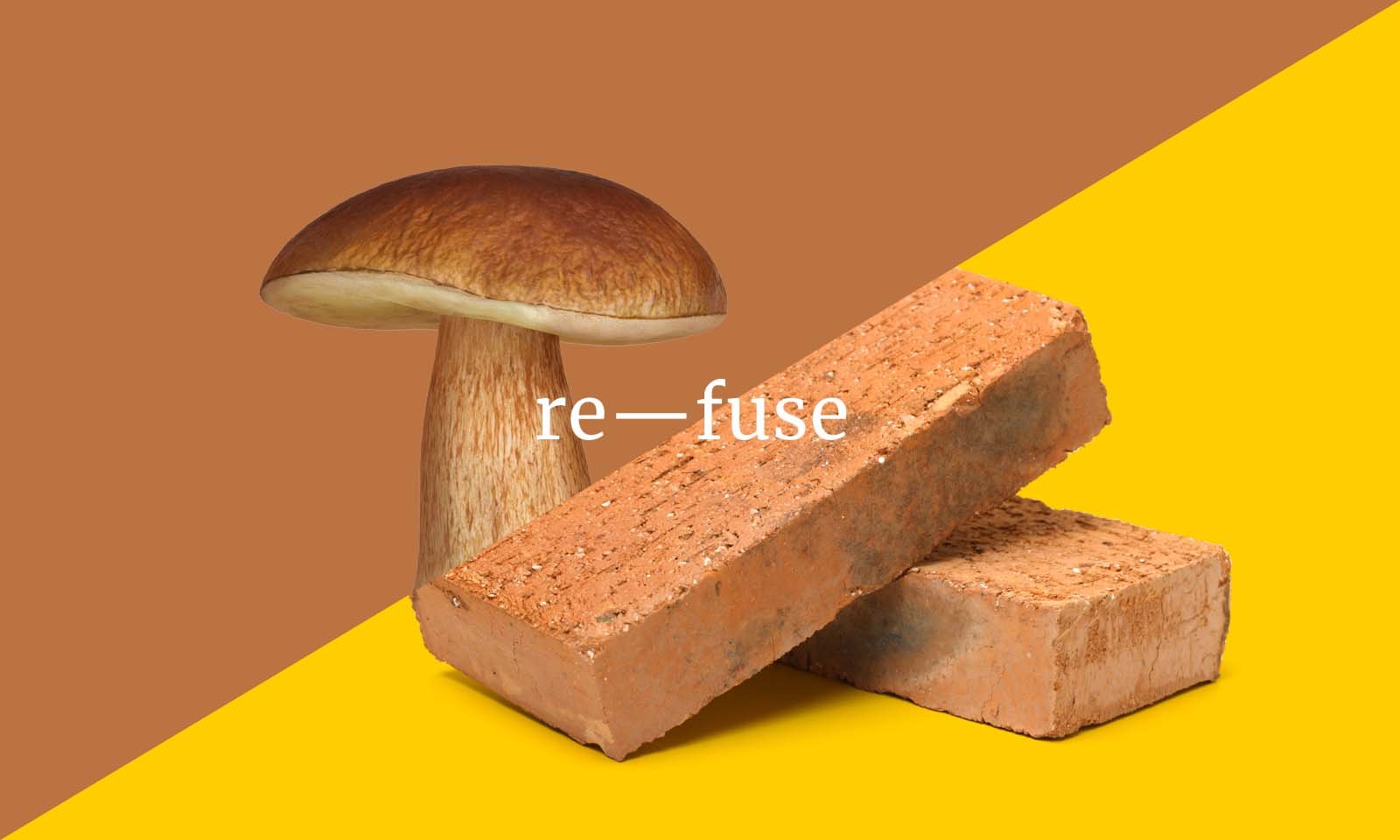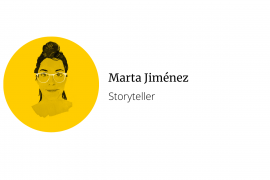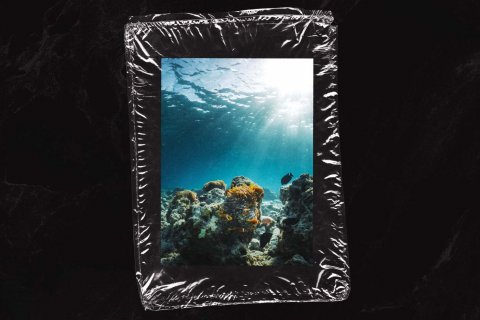Imagine a world where nothing is wasted. Everything is optimised to last. By design, your winter jacket is made of recycled plastic water bottles instead of newly manufactured polyester. You won’t actually buy it, you’ll lease it or get it second-hand. If it gets a rip or tear, it will be easier or cheaper to repair than buying a new one. And once the coat cannot be worn anymore, it will become a raw material for something else: a pillow, a chair or your animal’s bed. That’s the ambition of a circular economy. But how close are we to being circular? What can we do now to get there? And how will we ensure our circular solutions are sustainable?
Becoming circular and sustainable
Estimated reading time: 15 minutes

In a circular economy, we use as few resources as possible and then keep them in use again and again, delaying or preventing altogether the extraction of new raw materials. The Netherlands wants to become fully circular by 2050. That’s the goal, but how do we put it into practice? Right now we’re far from being circular: less than 9% of the world economy is. If you look at our economy today, it’s largely linear and extractive. To make a plastic water bottle, we use three times as much water as the amount used to fill it and enough oil to fill a quarter of it. The bottle then travels up to 15,000 km to land in your hands. If you were to open one now, chances are the bottle will reach the end of its life by the time you finish this article.
A bottle’s short lifecycle is no exception. Two thirds of the materials extracted from the Earth to make the things we buy or use end up as waste and greenhouse gas emissions within less than a year. The result: more, not less, new raw materials are used year after year. The climate impact of managing materials this way can lead us to an apocalyptic 3- to 6-degree temperature increase. That’s clearly unsustainable. So why not think differently and reuse the materials we already have? Refilling or recycling used bottles instead of buying new ones would save raw materials and CO2 emissions, right?
A circular strategy isn't necessarily always environmentally sustainable.

It’s not that simple. “A circular strategy isn’t necessarily always environmentally sustainable,” says Kieran Campbell-Johnston, early stage researcher at the Copernicus Institute for Sustainable Development at Utrecht University. “It takes much more energy to produce and recycle glass bottles than disposable plastic bottles. That doesn’t mean buying brand-new plastic bottles is a better environmental choice. There is a tipping point, where if you reuse this type of glass, this number of times, benefits will outweigh the costs.” For Campbell-Johnston, that means we should evaluate the actual impact of every circular solution to make sure we aren’t creating unintended trade-offs.
“We need to be careful that circularity doesn’t come at the expense of greater CO2 emissions or increased social inequalities. That the jobs generated by circular strategies are well-paid and safe. Because waste is a useful supply of new raw materials in a circular economy, but it’s also an environmental and human health hazard,” cautions Campbell-Johnston. That’s why Utrecht University has set up the interdisciplinary hub Towards a Circular Economy and Society to conduct independent research that gleans insights to steer society, policy and businesses in the right direction – not into a circular-but-unsustainable future.
Circular economy: what is it?
The first challenge in making the circular economy sustainable is that there isn’t a consensus of what circular really is. To bring clarity, Utrecht researchers Denise Reike and Walter Vermeulen synergised the existing views and provided a (conceptual) framework. It’s called the 10R hierarchy, and it ranks different options according to their potential to retain value, like refusing to buy a plastic shopping bag (R0 = Refuse) or turning a discarded t-shirt into a cleaning cloth (R6 = Repurpose). “The 10Rs provide orientation for how to behave in line with circularity principles. It can guide consumers in their choices and assist firms in how to buy, design and produce products,” says the paper’s co-author, Denise Reike.
It’s a hierarchical model, with the first R generally being a better strategy to preserve new raw materials or prevent waste than the second R and so on. However, Reike clarifies, “it’s a simplified hierarchy. It is important to know that recycling is not always the worst option, even though it’s lower down on the list.”
We should only be able to legally produce what we can also break down.
What this 10R framework does make plainly clear is that a fundamental shift from linear to circular depends on consumer choices as much as product or service designers. “Take fashion. We need to consume less and consume more consciously. But to turn your old t-shirt into a new one without adding any new materials, we also need to design our T-shirts differently from the start.” And there lies the crux of the transition to a circular economy.
“We should only be able to legally produce what we can also break down,” proposes Reike. “Only those innovations that have a built-in plan for durability and multiple lives and whose chemical compounds can be safely stored or brought back to nature should be considered circular,” says Reike.
Now the question is: in which ways can research help craft a circular economy that is sustainable? Here are a few ways researchers from Utrecht University are doing exactly that.

Designing with nature
It starts with designing more sustainable products. By developing novel biomaterials using fungi, microbiologist Han Wösten hopes to replace synthetic, fossil fuel-derived plastics, cement or leather with a material that is 100% natural and biodegradable. “Fungi can turn low-quality agricultural waste streams such as corn stalk into high-value materials. It is a fascinating design material,” says Wösten, whose research lab has inspired artists and designers to turn their fungi structures into anything from self-repairing dresses, building bricks or lightweight chairs.
It all started ten years ago when Wösten, a specialist in fungal growth and development, was approached by designer Mauricio Moltanti to use fungi to produce packaging materials. “We grow the fungus on an organic waste stream such as corn, rye or wheat straw. After a week, the fungus fibres bind and ‘glue’ the waste together, forming a sturdy texture that resembles foamy packaging materials,” he explains. By pairing different fungus species, organic waste streams, and growth conditions and processing, Wösten and collaborators have already managed to create sustainable substitutes for materials such as wood, cork, leather, plastics or rubber.
“Fungi can play a key role in a circular, zero-waste economy,” says Wösten. “Fungi-based packaging could be simply tossed away in the green bin or in your garden and decompose within weeks. Or you can reutilize it. In the future, everybody may be able to grow their own mushroom packaging at home.”
Reusable and reused
Designing more sustainable products with their end-of-service-life in mind is a sure route to circularity, but so is giving products a longer life. Moving away from single use into reusable packaging can have a huge impact on circularity. “Consider that in Europe, 40 percent of plastics and 50 percent of paper are produced for packaging, which makes up half of our total waste in landfills. So there’s a lot being produced and thrown away which could be reused instead,” says Patricia Megale Coelho, a researcher on packaging reuse and circular economy for CRiSP (Centre of Research in Sustainable Packaging). “Glass beer bottles, which are a practical and successful example in Europe, are currently reused on average 30 times, reaching up to 50 cycles.”
Products need to be designed to last so that they can be reused.
Reusable packaging can lead to drastic reductions in CO2 emissions compared to single use. “For example, a reusable glass bottle can have 80 percent less carbon emissions than a single-use glass bottle.” But reuse involves much more than simply re-using, stresses Coelho: “Reusable products need to be designed to last so that they can be reused, but they also have to be effectively reused.” This requires a return system in place that allows the packaging to be collected, cleaned, refilled and reinserted in the production line, but also, and importantly, consumer involvement in take-back. “A producer can design an amazing reusable coffee cup, but if it’s only reused a few times, it’s not fulfilling the product’s intended lifecycles and the impact might even be higher than single-use. For a packaging to be reused on average five times, there needs to be a return rate of 85 percent.”
For Coelho it’s crucial to have an efficient system in place where reusable products are easy to access and easy to return. “That’s a system in which different brands or businesses share the same reusable packaging to further reduce the environmental impact of reusables, decentralizing the logistics and helping change the mindset of consumers by making reuse the new normal.”
Coelho says she sees a not-so-distant-future where it is common to receive an online purchase in a reusable packaging that can be returned at a nearby drop-off point, or to order food in a reusable take-away container that can be returned at a neighbouring restaurant because they are also part of the reusable system. “Even though we’ve gotten so used to disposables, we need to have more sustainable alternatives to how we consume; not only by consuming fewer products, but also by consuming fewer resources,” says Coelho. “Reuse will play a key role in that.”

Recovering e-waste
Sometimes the collection of materials for reuse is not as easy, but clever solutions might allow us to recover even the tiniest bits. “Many of our tech gadgets, such as computers or phones, contain hundreds of materials in just one square centimetre. Just tearing them apart is extremely difficult, let alone recovering them,” says chemist Alex van Silfhout. As a result, much of our e-waste is exported illegally to Africa, downcycled or dumped in landfills, so solutions to this increasing ‘tsunami’ of e-waste are urgently needed. Van Silfhout has now developed a magnetic fluid that could help separate and recover all the valuable, and often scarce, components embedded in tons of our electronic waste in one single step so that they can be reused.
The mechanism is relatively simple. “Materials with different densities will float at different depths in the fluid,” explains Van Silfhout, who’s collaborated with Umincorp and Plastic Recycling Amsterdam, a recycling facility which already uses magnetic density separation (MDS) to turn mixed plastic packaging waste from 1 million Amsterdammers into high-quality plastics such as flakes, yarns or ferrofluid. “Materials in e-waste, such as lead or cadmium, are a lot more valuable and a lot heavier than plastics. The magnetic fluid we’ve created remains stable in extremely strong magnetic fields, which makes it possible to separate materials with a high density, such as electronic components.”
Whether this is viable for effective e-waste recycling is yet to be seen. “You’ll need a lot more magnetic fluid and a stronger magnet. Both are expensive, but the principle is the same. If you take your phone and grind it into pieces, the different materials will float at a specific height. If that can be optimised to the same degree, we’ll be able to recycle more of the electronic waste and the precious resources embedded in them.”
Soya milk, orange juice or tomato sauce, they all tend to be packed in cartons. Do you know what happens after you throw them in the recycling bin? Does it even make sense to recycle food and drink cartons? Blanca Corona Bellostas, assistant professor at the Energy and Resources group of the Copernicus Institute of Sustainable Development at Utrecht University gives you the answer (in Dutch).
Recycling the unrecyclable
That something can be recycled is often not enough. For years we’ve thought that separating plastics and glass and cardboard in the different recycling bins was enough to give a second life to products. In reality, only a very small fraction of what is collected for recycling indeed ends up in new products. Take plastics. “Less than 10% of all plastic ever made has been recycled,” says chemist Ina Vollmer. “In their hundred-years history, plastic products have been optimised for use, not for recycling. Only some plastics like polyethylene terephthalate (PET) and high-density polyethylene (HDPE), which you’ll recognise by the markings 1 and 2 on bottles or containers, are recyclable, and only if properly sorted and cleaned. Most plastic packaging is simply not designed for our current collection and recycling infrastructure.”
“We use many different types of plastics in the same packaging products, which are difficult to separate and use to make a new plastic product. Often, packaging is contaminated by food and other materials, like aluminium and paper, which makes them impossible to recycle with the currently available technology,” explains Vollmer. “That’s why I’m working on chemical recycling, which offers a solution to recover and reuse plastic that can’t usually be recycled and would otherwise go to landfill, incineration or end up in the ocean.”
With chemical recycling, we can obtain high-quality plastics that could be recycled endlessly.

Nowadays, every time plastic is recycled mechanically, it loses quality and value. A recycled plastic bottle, for example, can become transport crates or road filler, but these can’t be recycled any further. Indeed, the quality of recycled plastic packaging is often so low that it couldn’t be used for food packaging due to health and safety reasons. “With chemical recycling, we can obtain plastics of the same high quality as those from fossil raw materials that could be recycled endlessly.”
It is smart chemistry, unlike mechanical recycling, where after sorting and washing the collected plastic waste is melted and shaped into new plastic items without changing the chemical structure or removing potentially toxic additives. “Chemical recycling breaks down polymers into their basic building blocks, so they can then be used to make new plastics again of the same quality as when they were made the traditional way via crude oil,” says Vollmer, indicating that doing so could help increase the amount of recycled content even in new food-contact plastic, which would reduce our reliance on crude oil. “In my opinion, improving the circularity of a material as durable as plastic is key to stop it from ending up in the environment.”
Measuring impact
With all the emerging circular solutions, how can you know if you’ve made a sustainable choice? Is buying your veggies in bioplastics better than if they were wrapped in film? Just as much of our plastic packaging was designed to prevent food waste but turned into its own waste problem, there’s the risk that in the rush to find more sustainable alternatives, we could take ten steps backwards. To assess which new materials or strategies contribute to a circular economy and which don’t, or which ones we should prioritise, we need reliable metrics, says environmental scientist Li Shen, who evaluates whether bioplastics live up to the hype.
Because bioplastics are an amalgam of different types of polymers, many aren’t suited for conventional waste management. “Our research shows that cups made from polylactic acid (PLA), a transparent bio-based and biodegradable plastic derived from corn or sugarcane, are not able to degrade in Dutch industrial composting facilities, despite being certified as biodegradable,” Shen explains. How is that possible? “PLA degrades under specific conditions within six months, but in composting facilities organic waste is only treated for two to three weeks.”
We work with material innovators to think through a product’s end-of-life at an early stage of design.
Even if they can be treated properly, bioplastics look so similar to plastics made from fossil fuels that many consumers don’t know how to dispose of them properly, adds Shen. “If mixed with conventional plastic waste streams, bio-based plastics contaminate the recycling process. We’re left with a product that is potentially sustainable, but will end up in the environment just like their fossil-fuel-based plastic counterparts. There has been no thought put into waste management during the process of innovation.”
Shen aims to change that. “We work with material innovators to think through a product’s end-of-life at an early stage of design, where there’s still room for changes,” says Shen, who’s compared the Life Cycle Assessment (LCA) for seven bio-based plastics and their petrochemical counterparts. “This process helps ensure that the products that come to the market are either suited to the waste management infrastructure we already have, or that we are able to adapt our infrastructure well in advance.”
Circular innovations from Utrecht students
Taxing waste
While start-ups are making headway, widespread adoption of circular strategies is still far away. Financial and policy incentives are needed, says environmental scientist Walter Vermeulen. “Extended Producer Responsibility (EPR) has helped increase the collection and recycling rates of packaging materials, notably glass and paper, and shift away from landfilling in The Netherlands,” Vermeulen concedes. Still, the price of well-established packaging materials such as plastic or paper is still discriminating for bio-based or more sustainable alternatives. “To have a chance, sustainable design needs to be a far more attractive option.”
According to Vermeulen, EPR needs an upgrade. “When it was introduced in the 1980s to make producers and importers responsible for the entire lifecycle of the product, it was thought that if manufacturers bear the costs of collecting, recycling and disposing of their products, they will start re-designing them in a smarter, more sustainable way to avoid or reduce these costs,” Vermeulen explains. “But our recent review shows that the effects of EPR on circularity could extend further.”
Rewarding sustainable innovators through significant discounts can increase the use of recycled materials in new products.
For example by better stimulating packaging producers to apply eco-design. “The recovery of a discarded product through recycling is still very cheap compared to the original product price (less than 2%). So the financial incentive to design for sustainability is currently not enough,” he explains. What could work: “Rewarding sustainable innovators through significant discounts, however, can increase the incentive to use more recycled materials in new products.” If this were used at a European scale, the demand for recycled products would increase, and it will become less and less attractive to opt for virgin materials.
Governments can also discourage less circular options through stricter regulations. “We propose a higher price tag for the producer fee in the producer responsibility systems, that recognises the hidden true costs of a product. The revenues raised can then be invested in upscaling of innovative recycling technologies and processes to further the circular goals.”
And that’s how the most desirable circular solutions can get off the ground: with a legal nudge. We have an ambitious goal as a society: to become fifty percent circular by 2030 and fully circular by 2050. By using the power of chemistry to improve recycling rates, mimicking nature to grow sustainable materials and demonstrating the actual impact of circular solutions such as reuse, researchers in Utrecht are making sure that we advance in the right direction – a future that is circular and sustainable.














